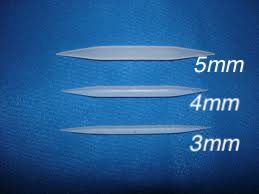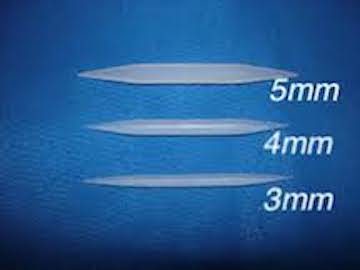Lip augmentation is most commonly done by injection techniques. While effective lip injections are limited by either the temporary duration of their effects or the unpredictability of injected fat survival. Other materials have been implanted into the lip (dermal grafts/substitutes) but they all suffer similar outcome fates. Despite the limited effects of injectable lip fillers, this is always a good place to start to determine if volumetric addition alone produces the desired lip augmentation effect.


Another potential aesthetic complication is a lip implant that is too short for the lip length and moves around afterwards. (slides back and forth) While this theoretically is avoided by having an adequately long implant between the two corners of the mouth, small discrepancies in length can make for some buckling (slightly too long) or sliding. (slightly too short) This is the one downside to having an implant that lacks tissue adherence. It is important once the implant is passed into the lip that the ends are still grasped on both sides and the lip is stretched out over the implant. This allows for a better appreciation of the lip vs implant length.
Lip implants have a unique set of aesthetic complications because of their soft tissue location in a highly sensitive and tactile facial feature. While effective for creating a permanent volume effect, they have a relatively high rate of aesthetic issues which ultimately are often only solved by their removal. While tissue adherence may solve some these issues, it is far better to not have tissue adherence which can make secondary adjustment/removal complicated.
Dr. Barry Eppley
Indianapolis, Indiana



